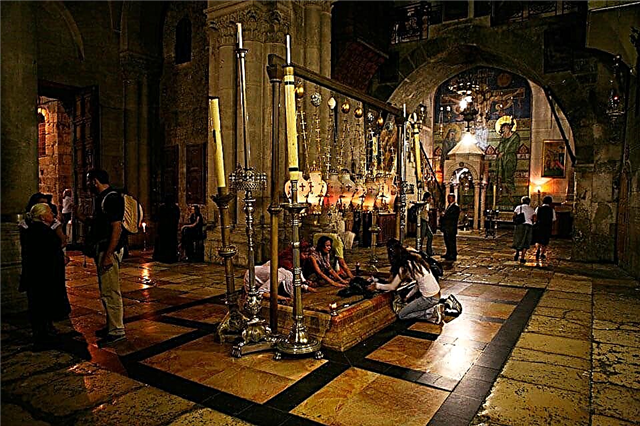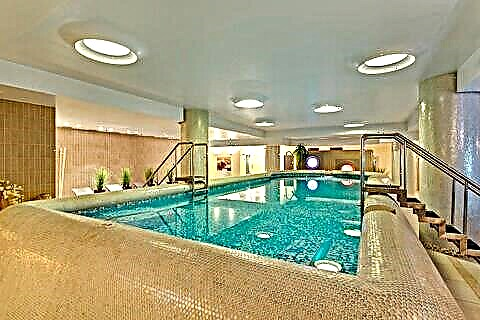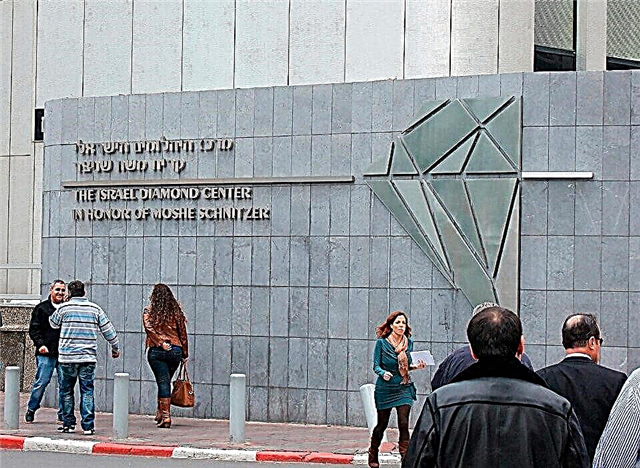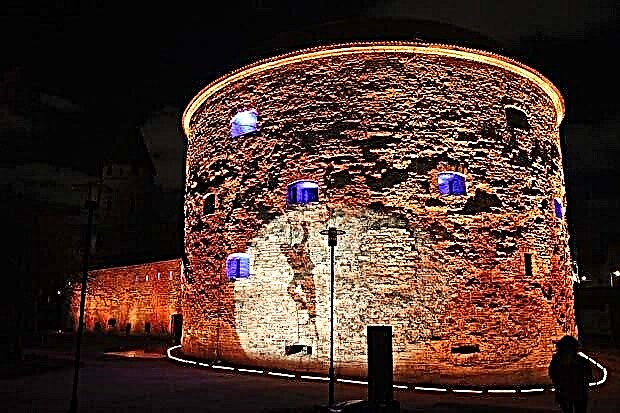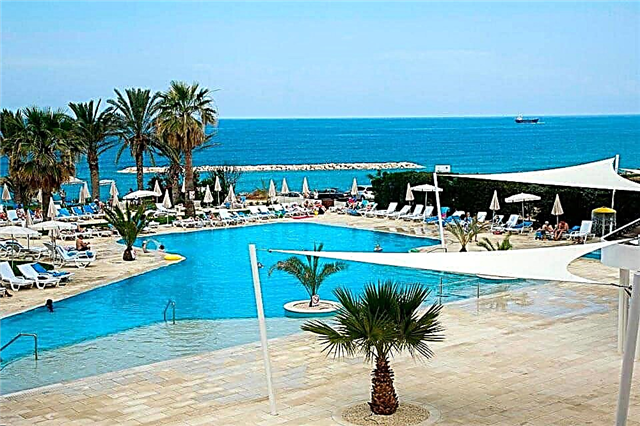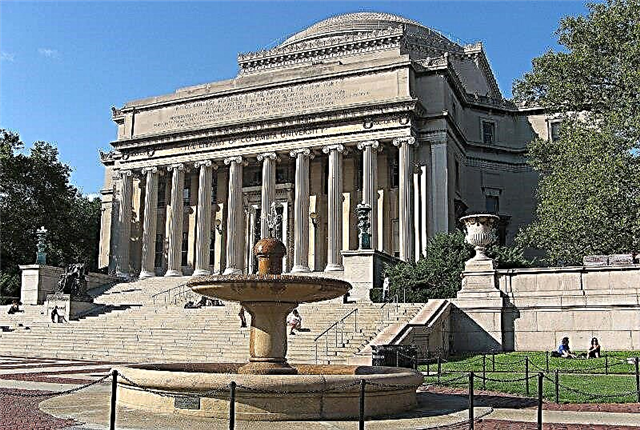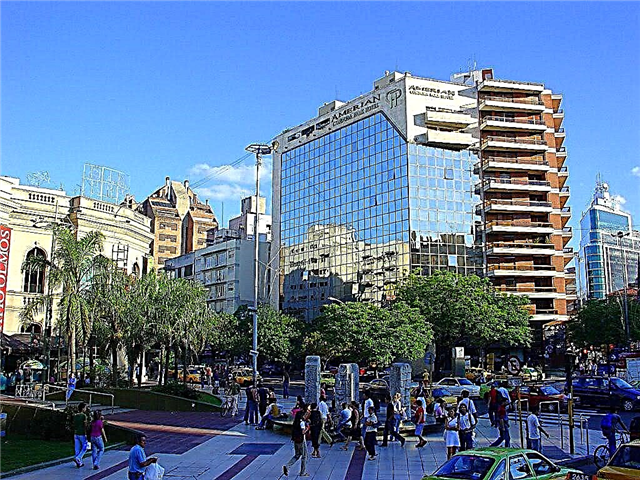Argentina has not yet been spoiled by Russian tourists, and the more attractive it is for them. No joke, almost a 20-hour flight. Not everyone can afford such a trip. Perhaps, if not for such a distance, then Latin American countries would be among the first in the routes of Russian travelers. Believe me, there is something to see and something to be surprised at. Today we will show you how to plan an independent trip to Argentina.
Interesting facts about Argentina - in our article.

Of the 12 countries located in South America, Argentina is the second largest after Brazil. She occupied the southeastern part of the continent and the eastern territory of the Tierra del Fuego archipelago. The length of this country from north to south was almost 4,000 km. Therefore, when planning a trip to Argentina, you need, first of all, to determine the priorities and, then, to think over the travel route so that it turns out to be not tiring.

How to get to Argentina
Russians cannot count on a direct flight to Buenos Aires, so when booking connecting flights, your main task is to find a flight with the least disadvantages. Considering the departure point Moscow, carriers offer options:
- Moscow - Buenos Aires. Daily flights, connecting in Madrid (Iberia company). Flight time without taking into account the transfer pause 15.5 hours
- Moscow - Buenos Aires. Daily flights, connecting in Paris (Air France). Flight time excluding transfers 16 hours
- Moscow - Buenos Aires - on specific dates, connecting in Frankfurt, Rome, London (by Lufthansa, Alitalia and British Airways, respectively). Flight time from 20 hours

It is better to plan the initial flight by the weekend. If your plane arrives in Buenos Aires on Friday evening or Saturday morning, then the transit acquaintance with the capital will pass without much traffic jams on the streets.
A big plus for our travelers is the visa-free regime established by Argentina for Russian tourists. A stamp in the passport of entry allows a Russian to stay on the territory of the state for up to 90 days.

Internal transport links
Domestic air traffic is well organized in Argentina. Local flights are operated by Austral (AU), Aerolineas Argentinas (AR), LAPA (MJ), but it is better to reserve tickets for these flights in advance. You can use the offer of Aerolineas Argentinas, which makes reservations 30 days in advance for 8 directions of domestic flights. The main airports in Argentina: in Buenos Aires - Jorge Newbery, in Cordoba - Pajas Blancas (COR).

The railway network is also well developed, but insufficient funding in recent years has led to the cancellation of some long-distance routes. Argentine trains run in 6 main directions and provide seats for three passenger classes: vip - seats in air-conditioned carriages, 1 and 2 classes. The most economical, of course, is the 2nd class, but it does not provide for sleeping places.
For the convenience of travelers, there is Argempass - a railway discount card (only for 1st class passengers), which provides for an unlimited number of journeys within one, two or three months. There are other discount offers for travel on trains, but they already offer discounted prices for groups of 10 people, for a passenger with two children, for young people under 30 and students.
For lovers of road travel, as in many countries, a car rental service is offered in Argentina. To use a rental car and not be tied to the schedule of movements, you need to have an international driver's license and a seal from the Argentine Auto Club (Automovil Club Argentino).

The intercity bus service is well organized: there are many routes, and the prices depend on the class and comfort. For example, many of the locals prefer to travel long distances by bus, as trains are often delayed.
The most common urban public transport in Argentina is the mini-bus (colectivo). They run on the streets of large cities around the clock and have a fixed low tariff (about 5 ARS). Its only drawback is overcrowding during peak hours.

Of course, in Buenos Aires, as in any metropolis, the metro is considered the most mobile means of transportation. This is not only a quick, but also an educational way, as the interiors of the metro lobbies tell about the most important historical events in Argentina. Six high-speed train lines extend to almost all districts of the city, and the metro fare is democratic - 3.5 ARS.
Argentine taxi cars are recognizable in all cities. They have yellow roofs and can be seen from afar. The taxi service can be used by order, from the parking lot, and simply by voting on the street. An average trip in the capital, for example, will cost you around 20 - 60 ARS.

When to go to Argentina
The first thing to remember when planning a trip to the South American continent is the seasons of the seasons that are opposite to ours. When we have snow and frost bites, it's the height of summer. Argentina is a country with a large territory and varied climatic zones. The north is for lovers of subtropics, the central part is a humid tropical climate, and the southern part is a temperate climatic zone.
If your plans include a trip to the South Andes and the lands of Patagonia, then the best time to travel will be from the end of January to March (summer).

Late April to early September (winter) are good for the northern and northwestern territories of the country.
In central Argentina, the weather will not bring any unpleasant surprises from late October to June.
Where to stay in Buenos Aires
Today there are plenty of booking services for hotels and hostels in Argentina. The first thing a traveler thinks about when booking accommodation is its cost. Comfort comes second. But these are not all the criteria by which you need to choose an overnight stay in an unfamiliar city. For Buenos Aires, as well as for other major cities in South America, it is important to think about the area where your future hotel is located.
In the capital of Argentina, there are areas that are unfavorable for tourists. In Buenos Aires, for example, there is the Villa 31 district, which is in no way inferior in the way of life of the local population to the Brazilian favelas. It is home to about 30 thousand illegal immigrants, and it is located not far from the main attractions of the capital.

Safe Areas
Several areas can be classified as safe places and attractive for foreigners:
Puerto Madero
The area is located near the city center, along the coast of La Plata Bay. It is noteworthy that today's fashionable area was organized as a port zone about 100 years ago. For a long time, brick warehouses and harbor cranes were attractive only to a small number of businessmen. But after several decades of decline and abandonment of port buildings, the picture began to change.
Warehouses have been renovated and converted into offices, restaurants and apartments, while two harbor cranes have been abandoned as a landmark, reminiscent of the time the area was formed.

San telmo
The oldest district, also located not far from the central part of the city, has preserved the buildings of the colonial period better than others. The flavor of the old architecture attracts any tourist to the cobbled streets of San Telmo. Living in this area will allow you to immediately fully immerse yourself in the atmosphere of Argentine tango, free artists, authentic cafes and antique shops.The area is completely tourist-oriented - expensive in terms of prices, but comprehensive in color.

Plaza de Mayo, Microcenter
Directly the very center of Buenos Aires with wide avenues, fundamental buildings and shady boulevards. The main attractions of the capital inherent in the business center are concentrated here. Life on weekends and holidays freezes here. It is in this area that the zero stop of the Hop-on Hop-off, a sightseeing bus, is located, on which tourists have the opportunity to get an overview of the capital of Argentina.
The double-decker bus routes include all major attractions. They make stops where you can both leave and continue your excursion. The ticket costs 80 ARS, is valid for a day, each seat is equipped with an audio guide in several languages.

Palermo. This is the modern area of Buenos Aires, away from the center. The largest and at the same time the most green area, which includes several microdistricts. Old Palermo is especially popular with foreigners. Cobblestone streets, low houses, shops and restaurants are attractive not only during the day, but also at night. Nightlife lovers will find entertainment for all tastes in Old Palermo.
Financial "surprises" - 2 exchange rates
The Argentine peso, as the new national currency, was established in 1992. Not so long ago, this country was considered an expensive vacation destination even for the Argentines themselves, who preferred to vacation in cheaper Brazil and Uruguay. But after the pegging of the national currency to the US dollar, the situation changed: inflation was controlled by the state, prices were held. However, the latest devaluation of the peso brought changes to the tourist's wallet.
Today in Argentina there are two exchange rates (official / unofficial). The difference is quite tangible. Of course, the choice of the method of currency exchange falls entirely on the shoulders of the tourist himself. Therefore, this issue needs to be thought about in advance. Anyone who does not want to take risks follows the official path (more expensive, but calmer). Those who want to receive "bonuses" from the exchange use the services of local currency dealers. In Buenos Aires, money changers can be easily found on the shopping and pedestrian street Florida, in the heart of the capital. But remember, no one has canceled the crooks yet.

In large cities it is possible to pay by payment cards (Eurocard, Master Card, American Express, Visa), but you need to be prepared for the fact that "does not work". You can easily avoid unpleasant situations if you always keep the equivalent of the required amount in local currency in your wallet.
What to see in Argentina
The remoteness of this country forces travelers from our region to carefully consider the choice and planning of the trip route. Argentina, like any country in the world, has something to be proud of and something to show. The list of natural treasures of this country includes the Patagonian plateau with ice caps, and the rocky Atlantic coast with wild animals, the Lake District, the seven-thousandth Aconcagua, as well as many national natural parks included in the UNESCO World Heritage List.
All these natural wonders are organically combined with the local flavor of large and small Argentine cities. We recommend including the Lunar Valley in the route.
Routes to natural attractions in Argentina are always planned as an independent, separate journey, requiring time and budget planning.
For more information on the most interesting sights of Buenos Aires, read our article.
Iguazu Falls
Many of the travelers consider this place to be the main natural attraction in Argentina. It's hard to argue. It is difficult to surprise northern Russians with glaciers and snow of Patagonia, the salt lakes and mountains of Salta are not new for connoisseurs, but the Iguazu Falls will amaze even the experienced.
They are located on the border of Brazil and Argentina and can be reached from both sides. A plane ticket from Buenos Aires will cost you around $ 300-400. You will spend a little less money on the bus, but the journey takes almost 18 hours. The choice is yours.

As soon as you approach, you will see, or rather guess, that you are seeing the main waterfall “The throat of the dragon”. Steam will swirl from the green mass of trees, rising into the sky. The town of Iguazu itself is the opposite of the prim capital, small, truly Hispanic with brick-red earth underfoot.

The national park is open to visitors from 8 am to 6 pm. Having bought a ticket with a map attached, you can take a special train to get to the main waterfall. True, there are several trains in the park, but the routes are easy to understand. To help tourists, signs are posted on the trails and every now and then there are park employees who are always willing to help.
Observation platforms are arranged both on the upper trail and along the lower route. From the upper trail, a stunning panoramic view of all the cascades opens, and you feel like a bird, and from the lower trail you can watch the walls of water from below, fully realizing the powerlessness of a person before this power.
El Calafate and El Chalten
To the southern part of Patagonia, to the El Calafate area, about 4 hours flight from Buenos Aires. An additional inspection of luggage is carried out here, as you enter an ecologically clean area with your own rules. The main goal of all visitors is the Los Glaciares National Park with a unique natural landmark, the Perito Moreno Glacier. Remember: there are restrictions on admission tickets, and they are sold only upon presentation of a passport. The park is open until 18:00. Buses to the glacier leave 2 times a day (08:15, back at 16:00, and 13:00, back at 19:30).
It would seem, what can the icy land surprise? But starting a walk from one observation deck to another, you gradually begin to understand why the step slows down. The icy power is amazing! Climbing and trekking enthusiasts immediately purchase tickets to El Chalten. The town itself is located in the territory of Los Glaciares, in the northern part of it. Transfers to El Chalten run 3 times a day (08:00, 13:00 and 18:30).

The bus will take you to the administration building, where you will be instructed and familiarized with possible routes. I must say right away that for the completeness of all sensations, physical endurance and dexterity are very important here. In order to be transported to the pages of the novel "Children of Captain Grant" not mentally, but personally to make sure of the beauty of the local nature, it is even worth overcoming yourself.
Color and magic of Argentine cities
Salta. A resort, vibrant Argentinean city, founded at the end of the XIV century, as a resting place for trade caravans heading to Buenos Aires. The picturesque and fabulous beauty place attracts with its history. Pilgrims come here to bow to the healing statue of the Virgin Mary, located in one of the halls of the Cathedral of Salta. And for tourists one of the most popular travels from this town is the "Train in the Clouds" (a trip to a town lost at an altitude of 4000 meters, which takes 14 hours in time).

Salta is connected by air with both Buenos Aires and Cordoba, and by bus - with many other Argentine cities.
Cordoba. The second largest Argentine city after the capital. For connoisseurs of architecture, it will be more attractive than Buenos Aires, since the flavor of the colonial era is preserved here with greater authenticity.

Mar del Plata. Famous for beach lovers, this Argentinean resort is located 400 km from the capital. The length and diversity of the coastline attracts both connoisseurs of solitude and party-goers.
Historically, Mar del Plata was a holiday destination for the Argentine nobility, so it still has a reputation as a fashionable and expensive resort. Various festivals and music shows are held here every year.


